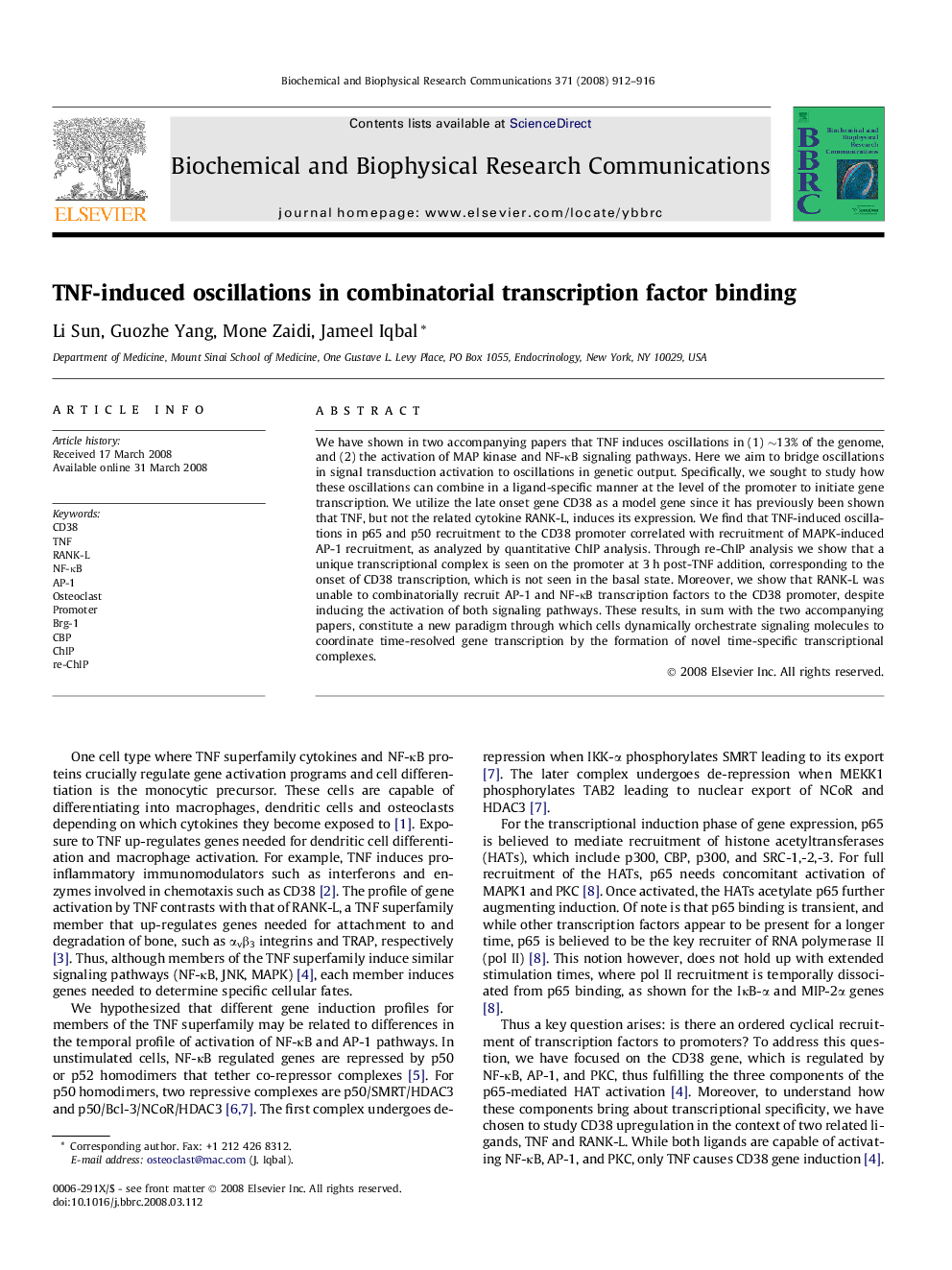| Article ID | Journal | Published Year | Pages | File Type |
|---|---|---|---|---|
| 1935214 | Biochemical and Biophysical Research Communications | 2008 | 5 Pages |
We have shown in two accompanying papers that TNF induces oscillations in (1) ∼13% of the genome, and (2) the activation of MAP kinase and NF-κB signaling pathways. Here we aim to bridge oscillations in signal transduction activation to oscillations in genetic output. Specifically, we sought to study how these oscillations can combine in a ligand-specific manner at the level of the promoter to initiate gene transcription. We utilize the late onset gene CD38 as a model gene since it has previously been shown that TNF, but not the related cytokine RANK-L, induces its expression. We find that TNF-induced oscillations in p65 and p50 recruitment to the CD38 promoter correlated with recruitment of MAPK-induced AP-1 recruitment, as analyzed by quantitative ChIP analysis. Through re-ChIP analysis we show that a unique transcriptional complex is seen on the promoter at 3 h post-TNF addition, corresponding to the onset of CD38 transcription, which is not seen in the basal state. Moreover, we show that RANK-L was unable to combinatorially recruit AP-1 and NF-κB transcription factors to the CD38 promoter, despite inducing the activation of both signaling pathways. These results, in sum with the two accompanying papers, constitute a new paradigm through which cells dynamically orchestrate signaling molecules to coordinate time-resolved gene transcription by the formation of novel time-specific transcriptional complexes.
